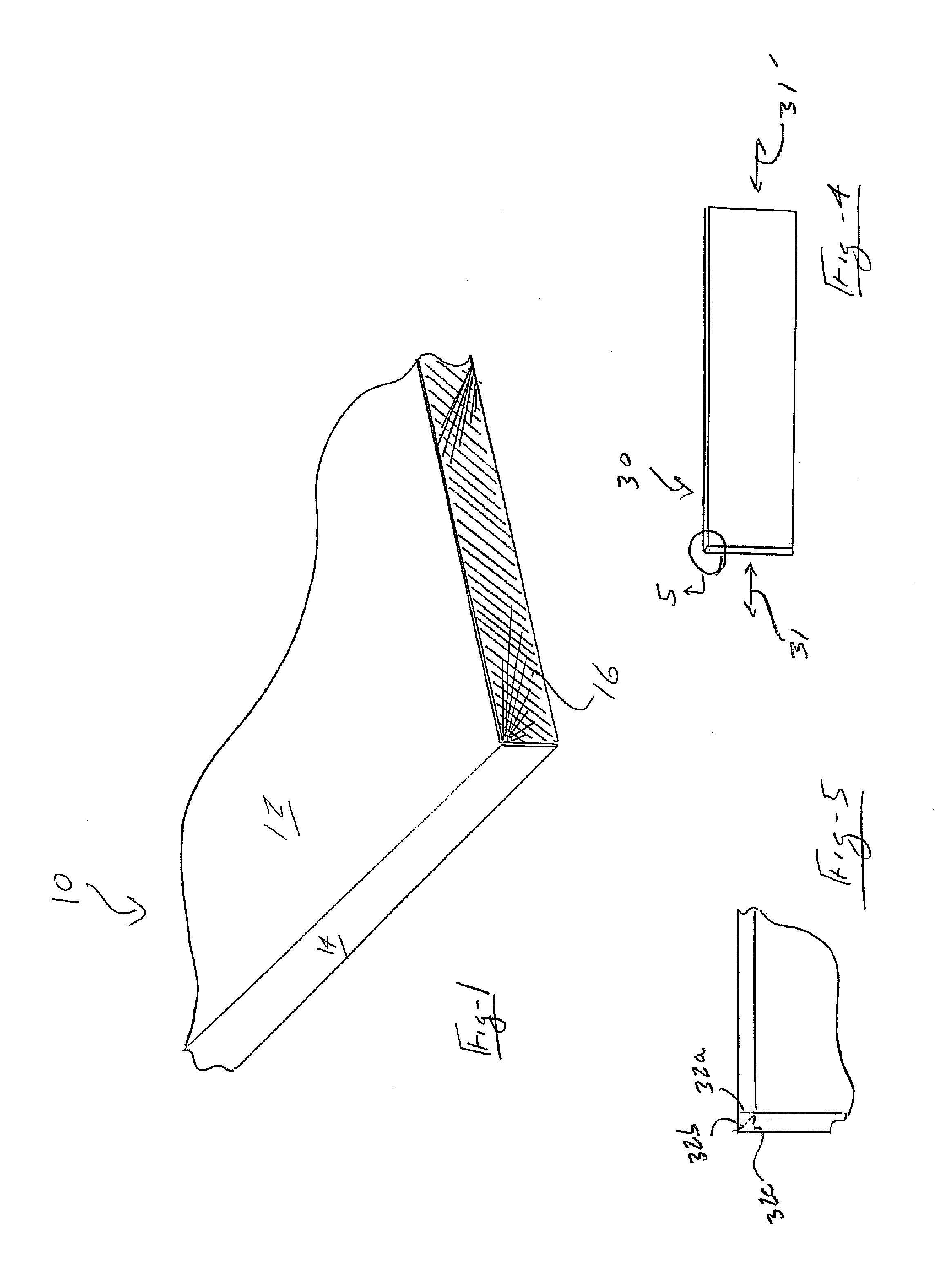Polymer-Based Face Panel Veneer and Edgeband System for Producing Decorative Panels Having Increased Durability and Decorative Effect and Associated Methods for Producing Such a System
- Summary
- Abstract
- Description
- Claims
- Application Information
AI Technical Summary
Benefits of technology
Problems solved by technology
Method used
Image
Examples
Embodiment Construction
[0037]As described previously, the present invention discloses a polymeric resin-based veneer laminating system, associated article and method for producing, which is an improvement over prior art assemblies in that it enables the provision of a mating edge profile of top and edge applied laminates (defined as any material exhibiting at least in part a thermoplastic component) secured to a rigid (i.e. usually particleboard) cellulose or other material, and without compromise to fit and finish in response to temperature and humidity variations existing between the materials. These objectives, as will be further described, are facilitated such as by the use of a first (typically PVA) relatively rigid (relative to the laminate material, e.g. the laminate will yield prior to adhesive completely yielding or bond failure) adhesive applied between the top laminate and associated top surface of the substratum, as well as the application of a second adhesive (typically EVA) in a heat / pressur...
PUM
| Property | Measurement | Unit |
|---|---|---|
| Fraction | aaaaa | aaaaa |
| Fraction | aaaaa | aaaaa |
| Fraction | aaaaa | aaaaa |
Abstract
Description
Claims
Application Information
 Login to View More
Login to View More - R&D
- Intellectual Property
- Life Sciences
- Materials
- Tech Scout
- Unparalleled Data Quality
- Higher Quality Content
- 60% Fewer Hallucinations
Browse by: Latest US Patents, China's latest patents, Technical Efficacy Thesaurus, Application Domain, Technology Topic, Popular Technical Reports.
© 2025 PatSnap. All rights reserved.Legal|Privacy policy|Modern Slavery Act Transparency Statement|Sitemap|About US| Contact US: help@patsnap.com



